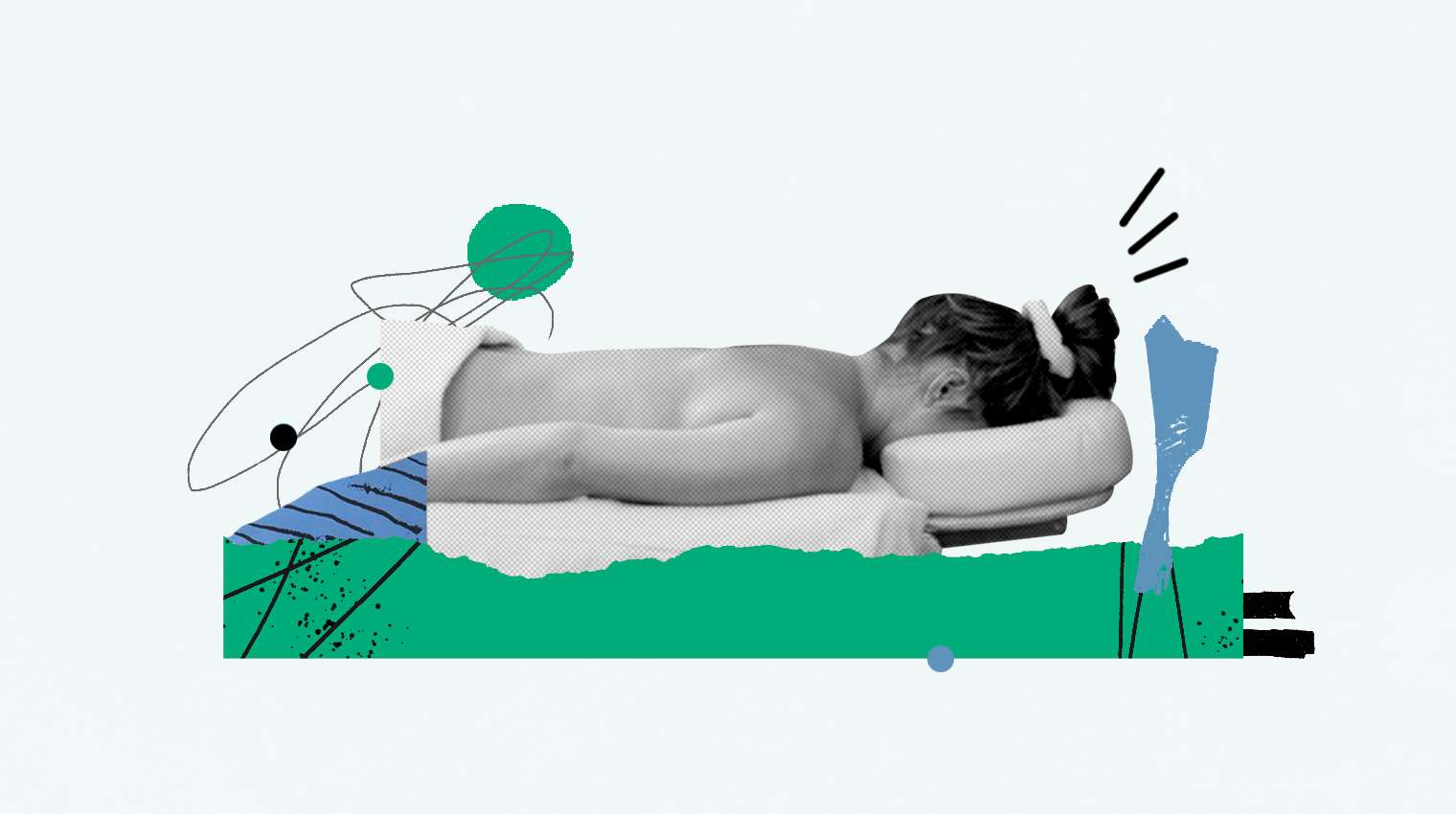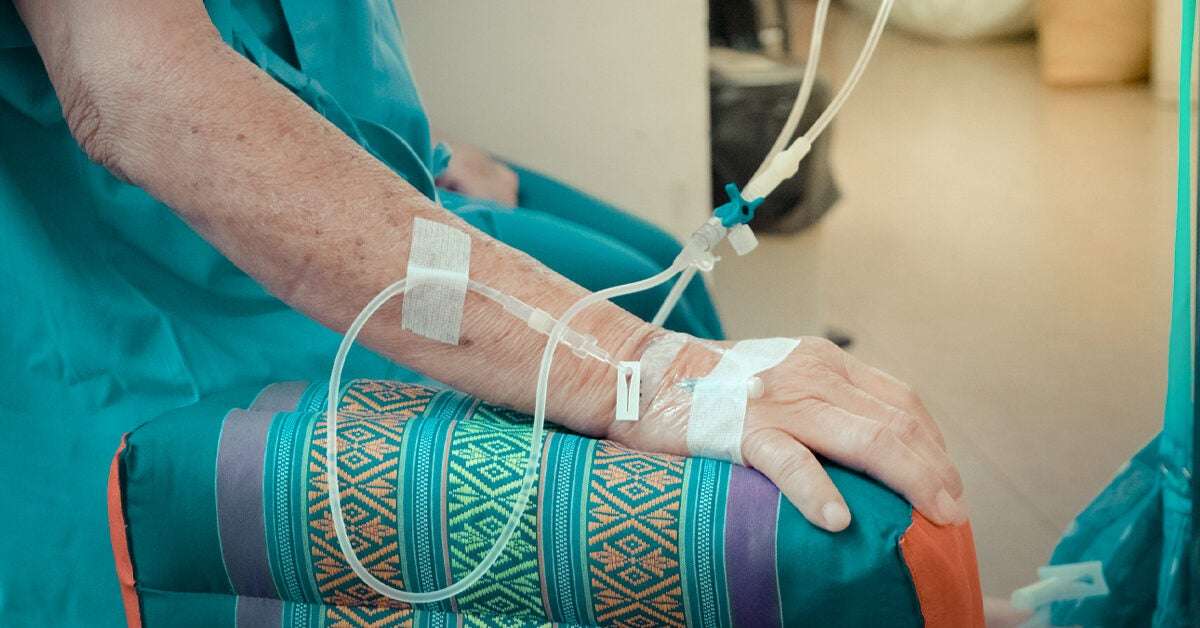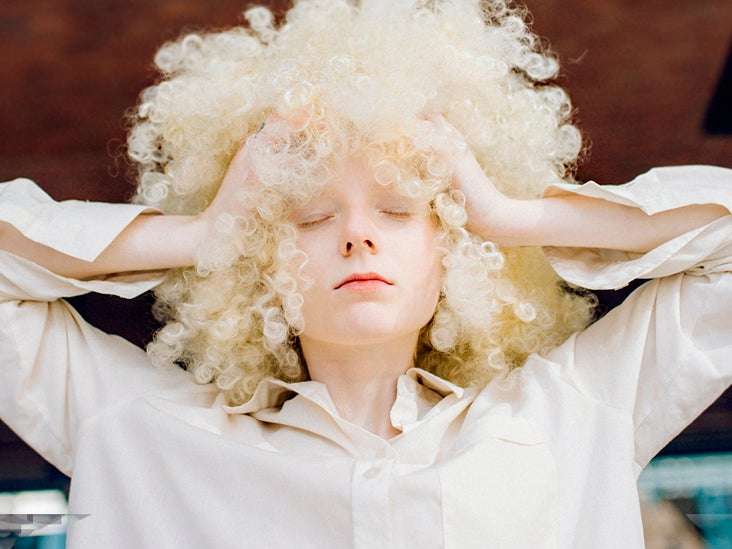Roots of Being is reader supported. When you buy through our links, we may get a commission.
If you are a regular visitor to a massage parlor, you may or may not realize that anxiety after a deep tissue massage is a thing that affects many people!
Having a deep tissue massage performed on you has a positive outcome. But there is sometimes a bit of temporary negative that lasts for a short time. And that is anxiety.
A deep tissue massage by massage therapists, for all its benefits, can cause tremendous emotional release. Along with the positive energy, you may find anxiety sensations that may have been in your body for a very long time flowing freely.
If you are planning for a deep tissue massage, this is a possibility you should prepare your mind for.
Some people get flu-like physical symptoms after a deep tissue massage. Others may feel ill even though they are not really ill. But there is a class of people who develop anxiety attacks before, during, or after a deep tissue massage.
Below, we discuss what a deep tissue massage is and why some people experience anxiety attacks because of it.
What Is A Deep Tissue Massage?
Deep tissue massage therapy is a special kind of massage technique. It uses more hand pressure than normal massage techniques.
This type of massage is highly recommended for people experiencing different muscle problems. This type of massage will like injuries, tightness, soreness, or prolonged muscle pain.
While performing a deep tissue massage, massage therapists will execute slow and deep finger pressure strokes. This is to relieve the patient of muscular tensions in the deep muscle layers or tissues.
A single massage therapy session may last for an hour or more. During the process, the massage therapist works every muscle in your arm, legs, and back including the abdominal region.
It can feel amazing and is quite a release. But the aftermath can come as a surprise.
While performing a deep tissue massage, the therapist will execute slow and deep finger pressure strokes to relieve the patient of muscular tensions in the deep muscle layers or tissues
Experiencing significant pressure is normal during a deep tissue massage. The therapist applies pressure to reach muscle tissues deep inside the body.
But doing this may trigger an emotional release in the form of anxiety attacks. There is a reason for this.
Why Do Some People Experience Anxiety After a Deep Tissue Massage?
You need to understand that the human body has an unbelievable ability to store pain in the form of emotional stress. Every taste, touch, sight, and sound you’ve ever experienced is stored in the form of emotion. And this can remains in your body for years without you even knowing.
As the emotions build up in the body, tension levels increase as it tries to hold everything in. This will last until such a time when it can release it all.
This is similar to crying.
You may have been dealing with a lot of negative emotions for a long time. But there comes a time when something happens that reminds you of the episode. Your natural reaction is to break down and cry.
Or maybe you bottle up all those little frustrations, until some point when you have a trigger, and all that stuff in the bottle flows out.
The same phenomenon can happen when you undergo a deep tissue massage. As the therapist works your muscles and tissues, the tension is released.
This release may trigger anxiety.
And as you already know, people respond differently to anxiety.
According to the Anxiety & Depression Association of America, there are different types of anxiety disorders.
If you develop anxiety before, during, and after a deep tissue massage, you may be experiencing one or two of these disorders.
1. Generalized Anxiety Disorder
Also called GAD, this disorder plagues people who worry about everyday things. GAD can cause restlessness, irritability, muscle tension, edginess, and other gastrointestinal issues.
Women are twice as likely to suffer from GAD than men.
3. Panic Disorder
Another type of anxiety disorder is Panic Anxiety Disorder. This is triggered by extreme fear or the feeling that you need to escape from impending danger.
This causes heart palpitations and breath shortness, sweating, dizziness, or chest pain. This one also affects more women than men.
3. Social Anxiety
Social anxiety is another type of anxiety that may cause you to experience an anxiety attack. This is one of the most common ones affecting many people. It is triggered by the fear of being judged or corrected by society for whatever reason.
Social anxiety forces the sufferer to refrain from engaging others in conversation.
People who suffer from social disorders are often reclusive. They are extremely shy and viewed as social outcasts. This type of person will need a lot of convincing to undergo a deep tissue massage.
4. Obsessive-Compulsive Disorder
Commonly called OCD. Victims of this anxiety issue suffer from intrusive thoughts that they cannot control.
This thought forced them to engage in unconventional rituals that may seem odd. For instance, they may fear the thought of illness. This will then compel them to clean thoroughly at every single opportunity they get.
The factors that cause people to become anxious vary from one person to the next. The way they respond to it is also different.
A person suffering from post-traumatic stress disorder may experience a stronger anxiety attack. This is more than a person who has too much testosterone in their system.
Why A Deep Tissue Massage Is Highly Recommended
A deep tissue massage by a massage therapist is highly recommended. It is almost impossible for you to work all your muscles on your own.
Many people will experience a release and feel cheerful and calm after a massage. But others may develop a panic attack after the session.
Despite this feeling, deep tissue massage therapy has benefits.
Being consumed with fear before, during, or after a deep tissue massage therapy is not something to worry about. The feeling is only temporary. We will argue that anxiety for a short while after the massage is a sign that the therapist did a good job.
The deep tissue massage released all those negative emotions that you weren’t consciously aware of, and now they’re gone.
The deep tissue massage released all those negative emotions that you weren’t consciously aware of, and now they’re gone.
As they work their way from layer to layer, massage therapists will find areas of tightness. They focus on those areas to relieve them of negative tension.
As they massage the area without applying too much pressure, the tension stored there is released. The bloodstream will flow properly to improve mental health.
Mental tension will flow in a similar fashion.
And the good news is you don’t have to engage your mind to be free of this anxiety, it just leaves on its own.
If you start to cry during or after the session, don’t feel awkward. It is only your body reacting to the pent-up tension and emotional trauma you have been carrying for years. Take deep breaths and try some anti-anxiety meditation.
Let the healing process run its full course.
Conclusion
Experiencing anxiety after deep tissue massage is normal and nothing to worry about. It will go away, and you will feel better afterward.
After the session, go back home and take a warm bath.
Depending on what you prefer, eat if you must. Then lay down and sleep to regain your balance and enjoy gradual pain relief.
These guests require extra sensitivity and knowledge—here’s what you need to know to nurture the nervous.
Imagine this: You’re ushered into what looks vaguely like a doctor’s examination room, told to lie down on your back and then left alone. You experience unfamiliar sounds and smells. Suddenly, someone comes in, closes the door and begins setting up products and equipment that you’ve never seen before. The room’s lights are dimmed and a bright lamp is lowered and adjusted to shine on your face.
Imagine this: You’re ushered into what looks vaguely like a doctor’s examination room, told to lie down on your back and then left alone. You experience unfamiliar sounds and smells. Suddenly, someone comes in, closes the door and begins setting up products and equipment that you’ve never seen before. The room’s lights are dimmed and a bright lamp is lowered and adjusted to shine on your face.
This may be what a first-time facial is like to someone suffering from an anxiety disorder.
As a spa professional, one of your primary missions is to help people escape and let go of their worries and anxieties, right? Keep in mind, though, there’s day-to-day stress that most everyone experiences—and then there’s clinical anxiety. It’s important to know the difference, because for someone with a panic or anxiety disorder, even the most relaxing oasis of a day spa can trigger distress. Fortunately, though, arming yourself with background knowledge will help you handle this sensitive client, and make his or her spa experience a true pleasure. Whether these sufferers come to you for skin care or to reap the calming effects of massage, exercising sensitivity to their condition will help them feel safe—and, hopefully, comfortable enough to visit your spa again.
What’s at Stake
Most of us have at some point experienced a racing heartbeat or shortness of breath and said to ourselves, “I’m having an anxiety attack.” But, more than likely, what we were actually experiencing was garden-variety stress. Anxiety specialist Lynne Freeman, PhD, MFT, founder of the Open Doors Institute in Encino, California, and author of Panic Free: Eliminate Anxiety/Panic Attacks Without Drugs and Take Control of Your Life, explains some key differences: “People have stressors every day. External stressors can trigger symptoms of anxiety, but for people with anxiety disorders, the triggers are internal. They create their own anxiety,” she says.
For you, examples of outside stressors may include a difficult client, disappointing profit/loss statement or morning argument with your teenage daughter. But when you’re having a panic attack because you’re worried about having a panic attack, this is a mental disorder.
The Anxiety and Depression Association of America lists the most common anxiety disorders:
• Generalized Anxiety Disorder (GAD): People with this condition suffer from persistent, unrealistic worry about everyday things. Symptoms might include muscle tension, restlessness, fatigue, irritability, edginess or gastrointestinal problems. This condition affects 6.8 million Americans, with women twice as likely to develop it as men.
• Panic Disorder: Described as the abrupt onset of intense fear, a panic attack manifests as a feeling of danger or need to escape, heart palpitations or shortness of breath, sweating, dizziness and/or chest pain. Six million Americans suffer from this disorder, which is also twice as likely to affect women.
• Social Anxiety: This disorder, estimated to affect 15 million people, stems from the fear of being scrutinized or judged to the point where the sufferer may not be able to engage in conversation. Physical symptoms may include blushing, sweating, shaking, shortness of breath or a rapid heart rate.
• Obsessive-Compulsive Disorder (OCD): People with this disorder harbor intrusive thoughts they cannot control and that often compel them to repeatedly perform ritualistic behaviors. They are often obsessed with cleanliness, germs or contamination. About 2.2 million people suffer from this disorder.
• Post-Traumatic Stress Disorder (PTSD): This disorder is a form of depression and anxiety that affects people who cannot recover from an event that happened in their past, such as involvement in war or a personal attack. Women are twice as likely to develop PTSD, which affects 7.7 million people.
Causes of anxiety and panic vary, from genetics to individual disposition to outside factors. But physiologically, Freeman says that research points to the adrenal glands located on top of the kidneys. “Too much adrenaline seems to trigger anxiety,” she explains.
Whereas engaging in physical activity, deep breathing and relaxation exercises can sometimes alleviate stress, people with anxiety disorders may not respond to these methods. “For most people massage is a good way to relax, but for someone with an anxiety disorder, it can be a cause for panic,” says Freeman. In addition to the claustrophobia and strangeness they might experience on a massage table, these clients’ worries likely run deeper.
“The person might be lying there thinking the therapist is feeling a lump somewhere on their body and that it’s cancer,” Freeman explains. “If they have OCD they might not be able to let go of thoughts about the spa’s cleanliness. Or they might spend the whole time consumed with fear that they will have an anxiety attack.” It makes for a complicated situation, to say the least.
It’s All in the Approach
Talk is largely considered the best strategy to comfort an anxious client. “That’s what we do in therapy,” says Freeman. “We work to change the pattern of thinking.” When serving a client who is jumpy or whose muscles are particularly tense (or who complains of stomach problems or asks frequent questions for reassurance), Freeman suggests providing constant explanation of what is happening during the treatment.
Start by sharing the entire treatment protocol, and then continue your explanation, step by step, throughout the service. “For instance, ‘We’re doing this procedure and it will last for about five minutes. What you’ll feel is this; my hands will be doing this, and so on—and if at any point you want to stop we will,’ ” suggests Freeman. “That kind of talk is very reassuring.”
Start treating just a small section of the face or body so that the client can get used to what’s happening. A client with anxiety is very likely to ask a lot of questions, and answering patiently will help assuage her fears. An intuitive spa professional knows when a client needs to be asked whether they’re comfortable or need any modifications. Make sure your focus is entirely on the client throughout the treatment.
For those with anxiety disorders, all types of spa services can arouse fear. These clients are vulnerable—they are literally putting themselves in someone else’s hands. Judith Olsen, owner of Wax and Lash Bar in Denton, Texas, always uses a caregiver’s approach with her waxing clients, many of whom exhibit fear and anxiety.
“I’m kind of like a mother,” she says. “I gain their confidence by telling them exactly what to expect and how to take care of themselves afterward. I also make small talk—ask how they found me, say ‘I like your shoes,’ ask them about themselves—anything to get their minds off their fears.”
There’s one caveat to the talk approach, though—Freeman reminds that for sufferers of social anxiety, having to make conversation is fear-inducing. So, again, the intuitive powers of you and your staff must be in full force. Music and candles can serve as a cue that silence is okay, and some clients may even find reassurance in being told that they don’t have to talk.
Other pointers include showing an OCD client your one-time use tools, or letting her watch you disinfect the treatment space. Also be aware that new clients may not be familiar with spa etiquette—simply informing them that they can end the treatment at any time can be hugely helpful.
Olsen is used to detecting fear in even the coolest customer. “They’ll often keep having to go to the bathroom, or they’ll be profusely sweating or clammy. Their skin might become blotchy,” Olsen says. Some are reassured simply by hearing that other clients have the same apprehensions.
In trying new treatments with an anxious client (see Ancient Soothing and Pointed Treatment, below), it may be necessary to stay in the room with them, or remain within earshot. “The reality is that someone with an anxiety disorder may not even seek out a spa unless someone brings them or gives them a gift certificate,” says Freeman. “But when they are fully exposed to what you do and see how sensitive you are, they’ll feel safe.”
Early Diagnosis
Judith Olsen, owner of Wax and Lash Bar in Denton, Texas, fetters out clients who might be suffering from anxiety disorders via a thorough intake form that directly asks guests to list their medication. “If I don’t recognize a medication listed, I immediately look it up online,” she says.
Freeman points out that some anti-anxiety medications, such as Zoloft, might be used to treat anything from depression to OCD, so it’s important not to jump to any conclusions—but a thorough intake will provide a clearer indication of what’s going on with a client.
Pointed Treatment
In Traditional Chinese Medicine, that excess energy created when the adrenal glands are pumping and pumping away is called “empty heat,” which throws the body off balance. Not surprisingly, acupuncture can be very helpful for people with anxiety conditions. “Acupuncture works to quiet and rebalance the energy that’s not being directed appropriately,” Freeman explains. “The needles also have a sedating effect.”
Ancient Soothing
In the thousands-year old ayurvedic system of medicine, three guiding mind/body principles govern health and wellbeing; the vata, pitta and kapha doshas, or forces of energy. Vata, which translates to movement, governs thinking and the nervous system, and is thought to be the dosha most out of balance in people suffering from anxiety or panic disorders.
“Vata imbalance causes an overly sensitive sympathetic nervous system,” says Celestina Dittmer, marketing director at The Raj (theraj.com) in Fairfield, Iowa. The Raj offers vata-balancing treatments such as abhyanga, a warm, herbalized, two-technician massage, and pizzichili, an oil bath with gentle massage. Other treatments used to balance vata include shirodhara, in which warm oils are poured slowly over the forehead, and a warm bolus massage called pinda swedhana.
“These programs are deeply relaxing to the physiology and balancing to vata,” Dittmer says. “Because the qualities of vata are ‘light’, ‘moving’, ‘dry’, ‘rough’ and ‘cold’, an excess of these forces will disturb vata,” she continues. “These qualities may be absorbed from our diet—common culprits are cold, dry, rough foods—or stem from lack of sleep, or may intensify during fall and winter.” Because ayurveda is a holistic medical system, special diet and herbal preparations should be part of the ayurvedic approach to treating anxiety. “Gentle yoga and pranayama, a yogic breathing technique, and transcendental meditation, will help balance the physiology of anxious clients,” Dittmer says.
Andrea Renskoff is a Los Angeles-based freelance writer.




